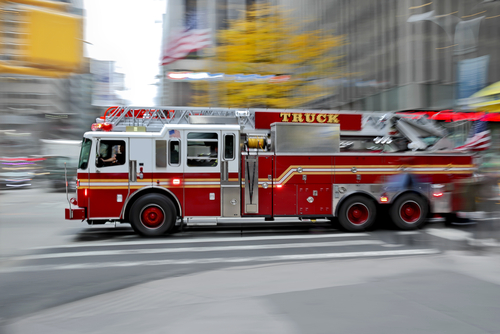With this year marking the 20th anniversary of the 9/11 tragedy, the National Fire Protection Association (NFPA) has highlighted four ways that day changed the world of fire and life safety, shedding light on how the fire service, first responders, and others now do their jobs in ways that better protect themselves and enhance safety.

From what many historians, politicians, and others have called one of America’s darkest days in history, following are changes that resulted:
1. A new approach to first responder communications: One of the greatest challenges cited by the firefighters, police officers, EMS personnel, and others who responded to the September 11 terrorist attacks—in particular the attacks on the Twin Towers in New York City—was gaps in communications.
One of the key recommendations to come out of the U.S. government’s 9/11 Commission Report, published in 2004, was to create a broadband network solely dedicated to first responders. Today, that exists in the form of FirstNet, a national broadband network exclusively for first responders. The network, which was established in 2012, gives first responders in areas where large-scale incidents are occurring, from building collapses to wildfires, priority on the network—pushing off civilian users who could slow the network down.
2. Updates to codes and standards: Two major areas where codes and standards improved because of 9/11 are first responder health and safety and high-rise safety:
- NFPA 1981, Standard on Open-Circuit Self-Contained Breathing Apparatus (SCBA) for Emergency Services, for example, was updated to require SCBA equipment to protect against chemical, biological, radiological, and nuclear attacks. Information about responding to incidents involving radioactive materials was added to NFPA 472, Competence for Responders to Hazardous Materials/Weapons of Mass Destruction Incidents.
- Codes like NFPA 101, Life Safety Code, and NFPA 5000, Building Construction and Safety Code, increased their requirements for exit stair width from 44 inches to 56 inches if the stairs handle occupant loads of 2,000 or more. Changes were made to NFPA 72, National Fire Alarm and Signaling Code, to allow mass notification signals to supersede fire alarm signals. More information about building collapse prevention and emergency planning was added to several standards.
In 2004, NFPA formed the High-Rise Building Safety Advisory Committee, which continues to this day to advise the committees for NFPA 101, NFPA 5000, NFPA 1, Fire Code, and other documents on safety issues in high-rise buildings.
3. More learning around what firefighters need: Published every five years by the NFPA Research division, the US Needs Assessment survey (sent to every fire department in the country) and the corresponding Needs Assessment of the U.S. Fire Service report provide a comprehensive picture of the most pressing needs of America’s more than 1 million career and volunteer firefighters. The first survey was conducted shortly after 9/11 and served as one of the main reasons why it garnered so much participation. Over the years, these surveys and subsequent reports have led to increased funding for things like equipment and training for the fire service, along with increased awareness around firefighter health and wellness, to name just a few outcomes.
4. Increased emergency preparedness in the private sector: Since 1995, NFPA has published NFPA 1600, Standard on Continuity, Emergency, and Crisis Management. But after 9/11, NFPA 1600’s prominence grew significantly because the 9/11 Commission Report recommended the private sector start adopting the standard. The report called NFPA 1600 “our national preparedness standard.”
Today, states like Connecticut have even incorporated NFPA 1600 by reference into their fire codes, while programs like FEMA’s Ready Business use NFPA 1600 as the basis for educating business owners on preparing for hazards like hurricanes. According to the Association of Continuity Professionals, in the past 15 years or so, NFPA 1600 has not only expanded its user base in North America, but also in the Middle East and Asia.
“These changes by no means reflect a full list of the outcomes generated by September 11, but they do shed light on the fact that out of this unspeakable tragedy, lessons learned and improvements made have contributed to furthering safety of the public and first responders,” says Jim Pauley, president and CEO at NFPA. “Nevertheless, this progress will always be far outweighed by the immeasurable losses incurred. All of us at NFPA commemorate and honor all those who died on 9/11, and countless others who have continued to grieve and carry on in the wake of the disaster.”
